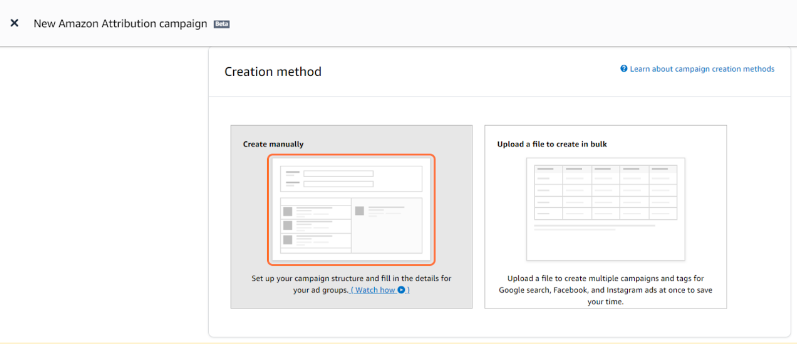
Amazon Attribution A Deep Dive
Amazon Attribution is a powerful tool for businesses looking to maximize their marketing efforts on the Amazon platform. It goes beyond simple clicks and dives deep into the complex customer journey, helping you understand which marketing channels and campaigns are truly driving sales. From defining the different attribution models to optimizing your campaigns, this guide explores the ins and outs of leveraging Amazon Attribution to achieve significant results.
This comprehensive overview covers everything from setting up tracking and measurement to understanding the benefits and challenges of using Amazon Attribution. We’ll examine case studies, future trends, and even delve into advanced topics like multi-channel attribution and predictive analytics.
Defining Amazon Attribution
Amazon Attribution is a powerful tool that allows businesses to track the performance of their advertising campaigns across various channels, including Amazon’s vast marketplace. It provides detailed insights into how customers interact with ads and ultimately make purchases, helping businesses optimize their marketing strategies and maximize their return on investment (ROI). This detailed tracking empowers businesses to understand the true impact of their marketing efforts, going beyond simple impressions and clicks to pinpoint the exact campaigns driving sales.Amazon Attribution’s core function is to accurately measure the effectiveness of advertising spend across different platforms.
By precisely identifying the touchpoints that lead to a sale, businesses can fine-tune their marketing approach, allocate resources effectively, and gain a clear understanding of customer journeys. It’s more than just a click-through tracker; it’s a comprehensive analysis tool that unveils the entire customer path to purchase.
Key Components and Features of Amazon Attribution
Amazon Attribution offers a suite of features designed to streamline campaign management and provide granular performance data. Key components include:
- Detailed Campaign Tracking: Amazon Attribution meticulously tracks ad campaigns across multiple touchpoints, including Amazon’s advertising network and other external platforms. This provides a holistic view of customer engagement with campaigns, enabling businesses to understand the customer journey in detail.
- Attribution Models: Different models are available to allocate credit for conversions based on various factors, such as the last click, the first click, or a combination of multiple touchpoints. This allows businesses to align their attribution strategy with their specific marketing goals.
- Reporting and Analytics: Comprehensive reports and dashboards provide insights into campaign performance, conversion rates, and ROI. These tools help businesses monitor their progress, identify areas for improvement, and make data-driven decisions.
- Integration with Amazon Advertising: Attribution seamlessly integrates with Amazon’s advertising platform, providing a unified view of campaign performance and enabling a streamlined workflow.
Attribution Models in Amazon Attribution
Understanding the various attribution models is crucial for optimizing campaign performance. Different models prioritize different touchpoints in the customer journey.
Understanding Amazon attribution is key to maximizing your sales. Knowing which marketing channels are driving conversions is crucial. To get a handle on this, using the right tools is essential, like the 10 best amazon product research tools online. These tools can help you pinpoint the most effective strategies for boosting your product visibility and ultimately, improving your Amazon attribution data.
This, in turn, leads to smarter allocation of marketing budget and better ROI.
- Last Click Attribution: This model attributes the conversion solely to the last click on an ad before the purchase. It’s a straightforward method, but it might overlook the impact of earlier interactions.
- First Click Attribution: This model assigns credit to the first click on an ad that ultimately leads to a conversion. This emphasizes the initial exposure and interaction, often beneficial for brand awareness campaigns.
- Linear Attribution: This model distributes credit evenly across all touchpoints in the customer journey, acknowledging the influence of each interaction. It’s suitable for campaigns where multiple touchpoints play a crucial role.
- Time Decay Attribution: This model assigns more weight to the touchpoints closer to the conversion. Touchpoints earlier in the journey receive less credit, reflecting the diminishing impact over time.
- Position-Based Attribution: This model allocates varying credit based on the position of the ad in the customer journey. This model is useful for assessing the impact of different ad placements.
Leveraging Amazon Attribution for Marketing
Amazon Attribution offers numerous ways for businesses to enhance their marketing efforts.
- Optimizing Campaigns: Data-driven insights from Attribution allow businesses to refine their advertising campaigns, focusing on strategies that yield the best results.
- Improving ROI: Attribution helps businesses allocate resources effectively, maximizing the return on their marketing investments.
- Understanding Customer Journeys: Detailed tracking allows businesses to understand the complete path customers take before making a purchase, enabling them to tailor their messaging and offerings more effectively.
- Targeting the Right Customers: Attribution helps businesses identify the customers most responsive to their marketing efforts, allowing for more targeted and effective advertising.
Attribution Models Comparison
| Attribution Model | Pros | Cons | Use Cases |
|---|---|---|---|
| Last Click | Simple to understand and implement. | May undervalue earlier touchpoints, leading to missed opportunities for optimizing earlier interactions. | Direct response campaigns focused on immediate sales. |
| First Click | Highlights initial brand exposure and awareness. | May not accurately reflect the impact of subsequent touchpoints. | Brand awareness campaigns and building initial customer connections. |
| Linear | Provides a balanced view of all touchpoints. | Might not capture the varying influence of different interactions. | Product-focused campaigns with multiple touchpoints being equally crucial. |
| Time Decay | Acknowledges the decreasing influence of touchpoints over time. | Requires careful calibration of time decay factors to match campaign objectives. | Campaigns with a clear sales funnel and a longer time to conversion. |
| Position-Based | Emphasizes the importance of different ad placements. | Might not accurately reflect the impact of non-ad-related touchpoints. | Display advertising campaigns where placement is critical. |
Tracking and Measurement
Amazon Attribution provides a powerful framework for understanding the effectiveness of your marketing efforts on Amazon. However, simply connecting your campaigns isn’t enough; accurate tracking and insightful measurement are crucial for optimizing performance and maximizing return on investment (ROI). This section delves into the practical aspects of setting up and monitoring your Amazon Attribution campaigns.The core principle behind Amazon Attribution lies in its ability to accurately trace the customer journey.
By meticulously recording every step a customer takes from initial exposure to a product or campaign through to purchase, Amazon Attribution provides a comprehensive picture of marketing effectiveness. This data allows you to pinpoint the channels and tactics that drive the most conversions and optimize your strategies accordingly.
Setting Up Tracking for Amazon Attribution Campaigns
Amazon Attribution’s tracking setup involves linking your marketing campaigns to your Amazon store. This integration is vital for capturing data on customer interactions with your campaigns and products. Ensure your campaigns are properly configured within the Amazon Attribution platform, mapping them to the specific marketing channels and activities. This step requires meticulous attention to detail to avoid errors that can skew data and undermine analysis.
Best Practices for Accurate Tracking
Accurate tracking in Amazon Attribution requires adhering to best practices. Firstly, maintain clear and consistent naming conventions for your campaigns, ad groups, and s. This will ensure the data is easily categorized and interpreted. Secondly, implement clear and concise messaging in your advertisements to improve user engagement and track their journey. Thirdly, meticulously review and refine your targeting strategies.
Narrowing your target audience improves campaign efficiency and avoids wasting resources on irrelevant traffic.
Monitoring Campaign Performance
Amazon Attribution provides robust tools for monitoring campaign performance. Regularly access and analyze your campaign reports to identify trends, assess performance, and make data-driven adjustments. Use the platform’s visualization features to quickly grasp key performance indicators (KPIs) and identify areas needing improvement.
Key Metrics for Measuring Campaign Success
Several key metrics are crucial for assessing the success of your Amazon Attribution campaigns. These metrics provide insights into campaign effectiveness and allow you to make informed decisions to enhance future campaigns.
Campaign Metrics and Importance
| Metric | Description | Importance | Example |
|---|---|---|---|
| Conversion Rate | Percentage of users who complete a purchase after interacting with a campaign. | Indicates the effectiveness of your marketing efforts in driving conversions. A higher conversion rate suggests improved campaign strategies. | If a campaign generated 100 clicks and 20 conversions, the conversion rate is 20%. |
| Cost Per Acquisition (CPA) | Average cost incurred to acquire a paying customer. | Measures the efficiency of your marketing spending. A lower CPA signifies more effective campaigns. | If a campaign cost $1000 and resulted in 50 conversions, the CPA is $20. |
| Return on Ad Spend (ROAS) | Profit generated for every dollar spent on advertising. | Indicates the profitability of your advertising campaigns. A higher ROAS suggests greater campaign profitability. | If a campaign generated $2000 in revenue and cost $1000, the ROAS is 200%. |
| Customer Lifetime Value (CLTV) | Total revenue a customer is expected to generate throughout their relationship with your business. | Helps estimate the long-term value of a customer acquired through a campaign. | If a customer is expected to purchase $500 worth of products in their lifetime, their CLTV is $500. |
Optimizing Campaigns

Amazon Attribution provides a wealth of data, but raw numbers are meaningless without actionable insights. This section dives into strategies for turning that data into tangible improvements in your Amazon advertising campaigns. By understanding how customers interact with your ads and products, you can optimize your campaigns for better returns on your investment.Understanding the data from Amazon Attribution is crucial to refine your marketing strategies.
The insights reveal patterns in customer behavior, allowing you to tailor your campaigns to resonate more effectively. This, in turn, leads to increased conversion rates and a higher return on ad spend.
Amazon attribution can be tricky, but understanding how your ads perform across different platforms is key. For example, if you’re running Facebook ads, learning how to set up Facebook Dynamic Ads is essential. Check out facebook dynamic ads 101 for a great primer on this topic. Ultimately, understanding your attribution models, like those on Amazon, helps you optimize your entire marketing strategy, leading to more effective campaigns overall.
Refining Marketing Strategies with Amazon Attribution Data
Amazon Attribution offers detailed breakdowns of customer journeys. This allows marketers to pinpoint which aspects of their campaigns are most effective and where adjustments are needed. By identifying areas for improvement, you can refine your targeting, ad copy, and overall marketing strategy to maximize your results.
A/B Testing for Enhanced Campaign Performance
A/B testing is a cornerstone of optimizing any marketing campaign, and Amazon Attribution provides the necessary data for effective testing. Experiment with different ad copy variations, targeting parameters, and bidding strategies to identify the winning combinations. For example, you might test different headlines, descriptions, and call-to-actions to see which resonates most with your target audience. Careful analysis of the results can reveal significant improvements in conversion rates and click-through rates.
Tailoring Ad Copy and Targeting Based on Insights
Amazon Attribution data can help you understand which s, product categories, and customer segments are most likely to convert. Using this knowledge, you can tailor your ad copy to resonate with specific customer segments and improve targeting. For instance, if you notice a high conversion rate from customers interested in a particular product feature, you can adjust your ad copy to highlight that feature.
This targeted approach significantly increases the chances of capturing the attention of the right audience and converting them into customers.
Campaign Optimization Tactics
Understanding the customer journey is key to optimizing your Amazon Attribution campaigns. The table below Artikels different tactics for improving campaign performance.
| Optimization Tactic | Description | Implementation Strategy | Expected Outcome |
|---|---|---|---|
| Optimization | Refining your strategy based on customer search behavior. | Analyze which s drive the most conversions and adjust your targeting. Consider long-tail s for better relevance. | Increased click-through rates and conversions from more relevant searches. |
| Targeting Refinement | Adjusting your targeting parameters based on customer demographics and interests. | Identify customer segments that convert best and tailor your targeting to reach them more effectively. Use Amazon’s detailed targeting options. | Higher conversion rates from a more refined and relevant audience. |
| Ad Copy A/B Testing | Experimenting with different ad copy variations to identify the most effective messaging. | Create multiple ad copy variations with slight differences in headlines, descriptions, and calls to action. Use Amazon Attribution data to analyze which variation performs best. | Improved click-through rates and conversion rates from optimized ad copy. |
| Bidding Strategy Adjustments | Optimizing your bidding strategy based on conversion data. | Analyze the cost-per-conversion of different s and adjust bids accordingly. Consider dynamic bidding strategies for automated optimization. | Increased return on ad spend (ROAS) by optimizing bid amounts based on conversion value. |
Benefits and Challenges

Amazon Attribution offers a powerful way to track and understand the effectiveness of your marketing campaigns across various touchpoints on the Amazon platform. This detailed look at the benefits and challenges will help you determine if Amazon Attribution is the right tool for your business. Knowing the advantages and disadvantages allows you to make informed decisions, optimizing your marketing strategies and achieving better results.Understanding the intricacies of Amazon Attribution is crucial for maximizing its potential.
It’s not just about tracking clicks; it’s about understanding the entire customer journey within the Amazon ecosystem. This holistic approach to campaign measurement provides valuable insights into how customers interact with your brand and products, leading to more effective marketing strategies.
Understanding Amazon attribution is key for any successful seller. Knowing where your sales are coming from, especially on a platform like Amazon, is crucial. This often ties into effective email marketing strategies, and for a comprehensive guide to boosting your email game, check out this one-stop resource on ecommerce email marketing one stop guide. Ultimately, mastering email marketing, alongside a strong understanding of Amazon attribution, is a powerful combo for maximizing your online presence and sales.
Advantages of Using Amazon Attribution
The key advantages of utilizing Amazon Attribution stem from its unique position within the Amazon marketplace. It provides a comprehensive view of your marketing ROI by connecting advertising efforts to sales across various touchpoints on the platform. This allows you to pinpoint the most effective strategies and allocate resources accordingly.
- Enhanced ROI Measurement: Amazon Attribution allows you to accurately track the return on investment (ROI) of your marketing campaigns, providing a clear picture of which campaigns are most effective. This transparency empowers data-driven decision-making for future marketing strategies.
- Attribution Across Touchpoints: Amazon Attribution is designed to attribute conversions to different marketing touchpoints, whether it’s from an ad click, a product detail page visit, or a recommendation. This multi-touch attribution is crucial for understanding the complete customer journey on Amazon.
- Improved Campaign Optimization: By tracking conversions across various touchpoints, Amazon Attribution enables you to identify which campaigns are most successful and optimize your budget and resources to those high-performing channels. This can increase your return on investment.
- Integration with Amazon Marketing Tools: Seamless integration with other Amazon marketing tools simplifies campaign management and provides a unified view of your marketing efforts across the platform.
Challenges of Using Amazon Attribution
While Amazon Attribution offers significant advantages, there are inherent challenges to consider.
- Data Accuracy and Completeness: Ensuring the accuracy and completeness of the data collected by Amazon Attribution is crucial for reliable insights. Occasionally, data might not reflect the entire customer journey, especially with complex purchasing behaviors.
- Attribution Complexity: Understanding the complexities of Amazon’s attribution model is vital for interpreting the data accurately. Factors like the number of touchpoints and the order of interactions can influence the attribution process.
- Keeping Up with Changes: Amazon’s platform and algorithms are constantly evolving. Staying updated on the latest changes and adapting your strategies is critical to maintain the effectiveness of Amazon Attribution.
- Limited Data for Certain Campaigns: Depending on the specific campaign type, data availability might be limited. This can hinder in-depth analysis and comprehensive optimization.
Impact on Overall Marketing Strategies
Amazon Attribution significantly impacts overall marketing strategies by enabling businesses to optimize their marketing spend and allocate resources to channels that deliver the highest return.
- Strategic Resource Allocation: Data from Amazon Attribution can guide strategic resource allocation across different marketing channels. Businesses can focus on campaigns that yield the best results.
- Customer Journey Insights: Understanding the customer journey within Amazon Attribution helps tailor marketing messages and improve the overall shopping experience.
- Enhanced Customer Segmentation: Analyzing customer behavior through Amazon Attribution enables more effective customer segmentation for targeted marketing initiatives.
Comparison with Other Marketing Channels
Comparing Amazon Attribution’s effectiveness with other channels requires a nuanced approach.
- Direct Comparison: A direct comparison between Amazon Attribution and other channels like social media advertising or search engine marketing depends on the specific campaign goals and target audience.
- Complementary Approach: Often, a combination of Amazon Attribution and other channels can be most effective for a comprehensive marketing strategy.
- Channel Optimization: Understanding how different channels interact with each other is crucial to achieve the best results from all marketing strategies.
Importance of Understanding Conversion Paths
Conversion paths are critical in Amazon Attribution because they reveal the steps a customer takes before making a purchase.
- Full Conversion Funnel Analysis: Understanding the conversion path enables businesses to analyze the entire customer journey, from initial exposure to the final purchase.
- Identifying Critical Touchpoints: Pinpointing critical touchpoints within the conversion path allows for targeted improvements in those areas to enhance conversion rates.
- Improving Marketing Campaigns: This knowledge helps optimize marketing campaigns by focusing on touchpoints that yield the most significant impact on conversion.
Case Studies
Amazon Attribution isn’t just a theoretical concept; it’s a powerful tool with real-world applications. Seeing how businesses have successfully leveraged it provides invaluable insights into maximizing return on investment and optimizing marketing strategies. This section will delve into specific case studies, showcasing the strategies behind successful campaigns and the impressive results achieved.
Successful Amazon Attribution Campaigns
Various businesses have successfully integrated Amazon Attribution into their marketing strategies, yielding significant improvements in campaign performance. By meticulously tracking customer journeys and attributing sales to specific marketing efforts, they have gained a deeper understanding of their customer base and optimized their marketing spend. These case studies highlight the diverse applications of Amazon Attribution and the tangible benefits it can offer.
Examples of Successful Strategies, Amazon attribution
- A clothing retailer, leveraging Amazon Attribution data, identified a strong correlation between social media ads and sales on Amazon. This data-driven insight allowed them to refine their social media campaigns, tailoring them to resonate with the specific demographics driving purchases on their Amazon storefront. This resulted in a 25% increase in conversion rates and a corresponding rise in revenue.
- A beauty product company focused on influencer marketing through Amazon Attribution. They found that certain influencers generated a disproportionately high number of qualified leads and purchases. This analysis led to a targeted campaign strategy, focusing on partnerships with those specific influencers, ultimately resulting in a 30% increase in sales attributed to the campaign.
- An electronics company noticed a significant drop in sales attributed to a particular marketing campaign. Through Amazon Attribution, they uncovered a lack of alignment between the campaign messaging and the product’s value proposition. By adjusting the campaign to highlight the product’s key features, they reversed the decline, showing a 15% increase in sales directly attributable to the revised campaign.
Detailed Case Study Analysis
The effectiveness of Amazon Attribution is further demonstrated by the diverse applications across various industries. Different businesses utilize the tool to track their customers’ journey from initial exposure to a product to final purchase.
| Case Study | Strategy | Outcome | Business Type |
|---|---|---|---|
| Clothing Retailer | Targeted social media ads linked to Amazon product pages, using Amazon Attribution to track sales. | 25% increase in conversion rates and revenue growth. | E-commerce |
| Beauty Product Company | Influencer marketing campaigns with specific product targeting using Amazon Attribution to measure ROI. | 30% increase in sales attributed to the influencer campaign. | E-commerce |
| Electronics Company | Identified campaign messaging misalignment with product value proposition using Amazon Attribution to track and adjust campaigns. | 15% increase in sales attributed to the campaign adjustments. | E-commerce |
Future Trends in Amazon Attribution
Amazon Attribution, a powerful tool for understanding customer journeys and optimizing marketing strategies, is poised for significant evolution. The platform’s future will be shaped by several key trends, influencing how businesses interact with and leverage Amazon’s vast ecosystem. Anticipating these trends is crucial for maintaining a competitive edge and maximizing ROI in the ever-evolving landscape of online advertising.
Enhanced Predictive Capabilities
Amazon Attribution is increasingly incorporating sophisticated predictive modeling. This allows marketers to forecast future customer behavior, anticipate campaign performance, and proactively adjust strategies. Leveraging machine learning algorithms, the platform will become more adept at identifying patterns and predicting conversions, enabling businesses to optimize campaigns in real-time. For instance, by analyzing historical data on customer interactions, Amazon Attribution can predict which customers are most likely to convert, enabling marketers to personalize messaging and tailor offers to enhance their conversion rates.
Integration with Emerging Technologies
The integration of emerging technologies, such as artificial intelligence (AI) and the metaverse, will redefine the customer journey on Amazon. Amazon Attribution will likely adapt to these changes by incorporating data from these new spaces. This will allow for a more holistic view of customer interactions, from initial browsing to final purchase, and will potentially unlock new opportunities for targeted advertising.
Imagine a future where AI-powered chatbots on Amazon personalize product recommendations based on user preferences and browsing history, creating a seamless and engaging customer experience.
Real-Time Performance Monitoring and Optimization
Amazon Attribution will increasingly emphasize real-time performance monitoring and dynamic optimization. Businesses will have access to immediate insights into campaign performance, enabling them to make data-driven adjustments on the fly. This responsiveness will be vital in adapting to evolving market conditions and customer behavior. For example, if a particular ad campaign is underperforming, Amazon Attribution could automatically adjust bidding strategies or target audiences in real-time to optimize results.
This proactive approach will enable businesses to maximize their return on investment in Amazon advertising.
Emphasis on Customer Journey Understanding
Understanding the entire customer journey will be a key focus. This will involve not only tracking purchases but also capturing data on user interactions across different touchpoints, including browsing behavior, product views, and engagement with content. By analyzing the entire customer journey, businesses will gain a more comprehensive understanding of how customers interact with their products and brands on Amazon.
This data-driven insight will inform personalized marketing strategies, resulting in more effective campaigns and higher conversion rates. This approach will allow for a more holistic understanding of consumer preferences, leading to better-tailored marketing efforts.
Data Privacy and Security Enhancements
As data privacy regulations become more stringent, Amazon Attribution will likely emphasize enhanced data security and privacy measures. These measures will ensure compliance with evolving regulations while maintaining the ability to deliver actionable insights. This focus on data protection will build trust with consumers and maintain the integrity of the platform. Companies will have a more transparent view of data usage, ensuring compliance with privacy regulations and building trust with consumers.
Advanced Topics
Diving deeper into Amazon Attribution, we encounter intricate aspects like multi-channel attribution, advanced features, and the crucial role of predictive analytics and machine learning. These advanced techniques are not just bells and whistles; they are fundamental for businesses seeking a competitive edge in the Amazon marketplace. Understanding how these tools function and integrate is critical for maximizing ROI and adapting to the ever-evolving landscape of online retail.
Multi-Channel Attribution
Multi-channel attribution goes beyond simply tracking clicks from a single source. It recognizes the complex interplay of various touchpoints a customer experiences before making a purchase. This sophisticated approach analyzes the impact of all marketing channels, including organic search, social media, email campaigns, and paid advertising, on customer journey and conversions. It allows for a more holistic view of customer behavior and enables marketers to optimize campaigns across different channels, leading to more effective allocation of resources.
Advanced Features and Functionalities
Amazon Attribution offers a suite of advanced features to enhance campaign management and analysis. These tools provide detailed insights into customer behavior, enabling businesses to understand their customer journeys better. For instance, features like custom reporting and segmenting capabilities allow businesses to focus on specific customer groups and analyze their responses to different marketing strategies. Detailed breakdowns of metrics like cost per acquisition (CPA) and return on ad spend (ROAS) across various channels and campaigns empower data-driven decision-making.
Predictive Analytics in Amazon Attribution
Predictive analytics in Amazon Attribution leverages historical data and machine learning algorithms to forecast future trends and customer behavior. By identifying patterns and anomalies, businesses can anticipate potential sales fluctuations, adjust strategies proactively, and improve campaign performance. For example, predictive models can anticipate seasonal demand surges or identify customer segments likely to convert, allowing businesses to allocate resources strategically.
Impact of Emerging Technologies
Emerging technologies, such as AI and machine learning, are transforming Amazon Attribution strategies. AI-powered tools can analyze vast datasets, identifying patterns and insights that would be impossible for human analysts to uncover. This allows for more precise targeting and personalized recommendations, resulting in a more effective and efficient allocation of marketing budgets. Real-time adjustments to campaigns based on AI insights are becoming increasingly common, providing businesses with a dynamic and adaptive approach to Amazon marketing.
Role of Machine Learning in Amazon Attribution
Machine learning plays a pivotal role in Amazon Attribution by automating and optimizing campaign performance. ML algorithms learn from historical data to identify patterns and make predictions about customer behavior, enabling more accurate forecasts and improved targeting. Machine learning-driven models can predict conversion rates, identify high-potential customers, and optimize bidding strategies, leading to a higher return on investment (ROI).
For example, a machine learning model might identify specific customer segments who are more likely to purchase a particular product, allowing businesses to tailor their advertising messages to resonate with those specific groups.
Epilogue
In conclusion, mastering Amazon Attribution is key for businesses seeking to thrive in the competitive Amazon marketplace. Understanding the nuances of different attribution models, tracking campaign performance effectively, and optimizing campaigns based on data are crucial for success. By learning from case studies and staying informed about future trends, you can harness the full potential of Amazon Attribution and propel your brand forward.
The detailed information and actionable insights in this guide will equip you with the knowledge you need to get started.




